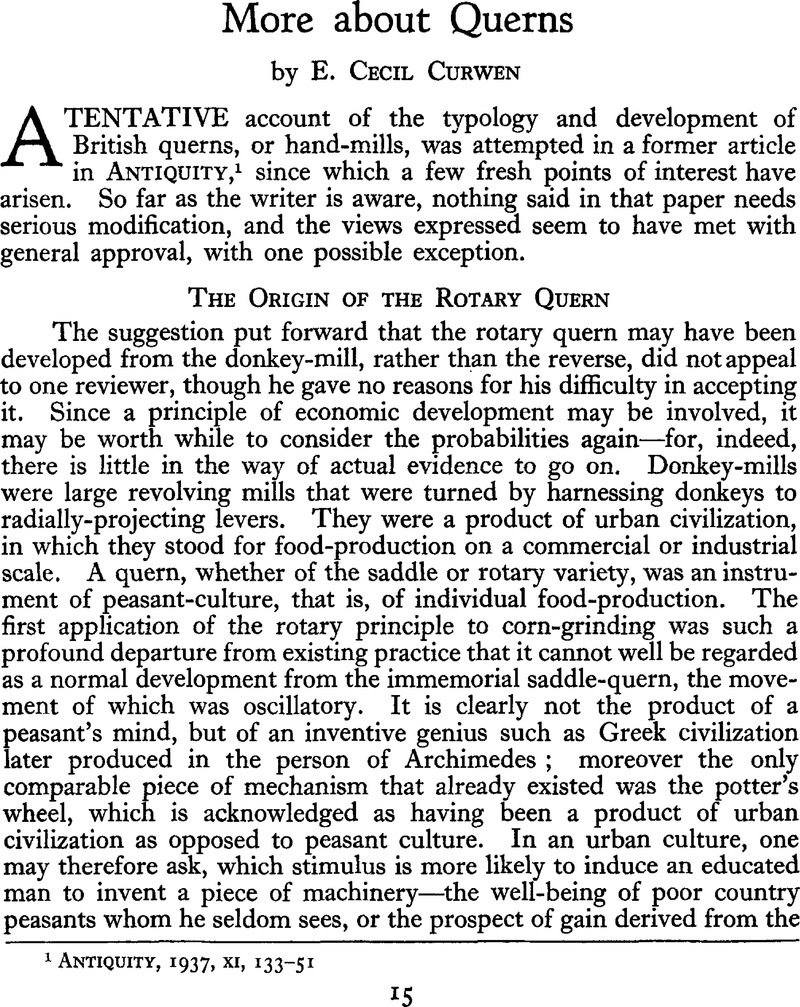
1 ANTIQUITY, 1937, XI, 133-51
2 ANTIQUITY, 1938, XII, 151. According to Prof. R. A. S. Macalister saddle-querns had not yet been superseded by rotary querns in Palestine in the time of Christ (A Century of Excavation in Palestine (1925), 233), and yet the donkey-mill was already known, for it is referred to in Matthew, XVIII, 6 (μύλoς ỏvικς)
3 It is difficult to see how a quern with an obliquely set spindle-socket like that of Fig. 6 could have revolved at all. The whole thing looks amateurish.
4 Lower stones that are tilted at an angle to the horizontal are not infrequent ; a possible explanation is that they may have been the result of an attempt to encourage the meal to emerge on one side of the quern, instead of all round it.
5 The Welsh have a special term, breuan dinfoel, for a round-bottomed quern.
6 These four querns are illustrated in my former article, loc. cit., figs. 14, 17-19 (p. 143), and plate 11, 5, 6.
7 Exceptions to this rule may occur : a 3rd-4th century quern (fragment) from Thundersbarrow Hill, Sussex, originally 30-32 inches in diameter and 3¼ inches thick, preserves part of the socket for a vertical handle (Ant. Journ. 1933, XIII, 123-4). In this case the diameter of the quern was sufficient to allow a handle so placed to exert the necessary leverage ; in most Roman querns the diameter was so small that the handle had to extend radially beyond the edge of the stone.
8 H. O’N. Hencken, Cahercommaun (Roy. Soc. Ant. Ireland, 1938), p. 49 and fig. 29, no. 698.
9 ANTIQUITY, 1938, XII, 151-2. On p. 152 a printer’s extraordinary ‘mishap’ has made nonsense of the second line, which should read : ‘When dried in an oven there was less flattening but no angular fragments’. (See also p. 365 of the same volume.— EDITOR).
10 See plate III of former article.